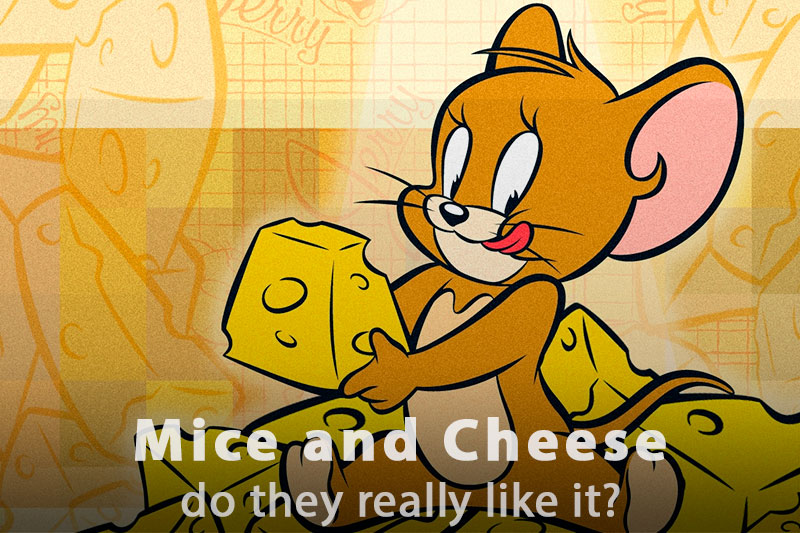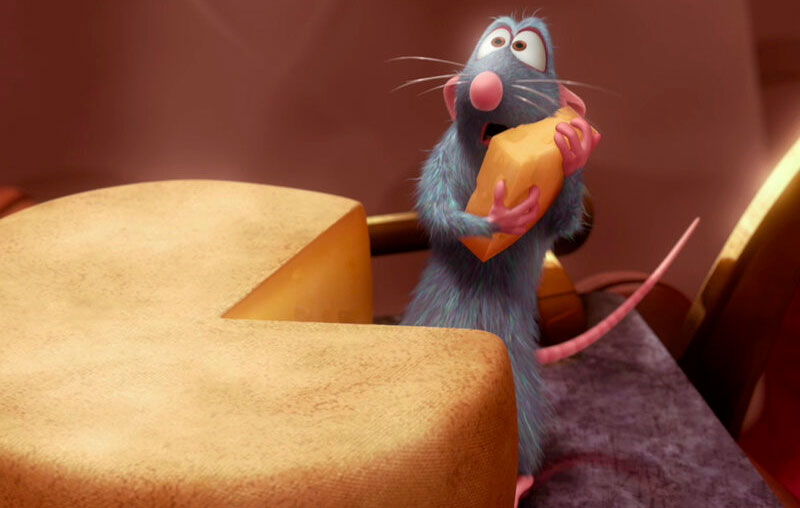Mice love cheese, it is a widely known fact. It is no coincidence that these rodents are in constant hunt for their favorite delicacy in many cartoons where they appear (for example, the world-renowned “Tom and Jerry”). However, what if mice do not like cheese? Let’s try to figure it out and understand whether the mice’s love for cheese is a myth or based on actual facts.

In fact, mice prefer grains and seeds, especially the ones living in the wild.
On the contrary, it repels them like all strong odors.
In most cases, they eat cheese because it is the only food that is currently available. In other words, out of desperation.
Although house mice have lived side by side with humans for thousands of years, while enjoying the blessings of civilization (for warmth during cold winter days to abundant food supplies), they are still wild animals. And, of course, they try to adhere to the same habits that were typical of their distant ancestors – evolution has been honing the instincts and behavior of all its creations for thousands of generations.
It is simply impossible to find cheese in the wild, as it is a product prepared exclusively by people. Therefore, mice prefer grains as a nutritious and, very importantly, familiar diet.
They are very indifferent to cheese. Firstly, it is an unusual food. Even if a mouse was born and raised in a cheese factory, it still will not have time to adapt to cheese just in one generation. Secondly, mice, like other rodents, have a good sense of smell. And cheese has a relatively strong smell – even a person not used to this variety will not like it, not to mention animals. Therefore, rodents try not to eat cheese, trusting their instincts to determine the edibility of products.
 Surely many of you may claim that they have personally seen how mice eat cheese or simply leave bite marks on a large head of cheese. Yes, it is hard to argue with the fact that rodents really eat cheese, the same way as they eat soap, glue, candles, cardboard, and many other absolutely inedible products. And even more so, they do not refuse meat, chocolate, and other sweets.
Surely many of you may claim that they have personally seen how mice eat cheese or simply leave bite marks on a large head of cheese. Yes, it is hard to argue with the fact that rodents really eat cheese, the same way as they eat soap, glue, candles, cardboard, and many other absolutely inedible products. And even more so, they do not refuse meat, chocolate, and other sweets.
How does this fit in with all of the aforementioned? Everything is pretty trivial and simple. When given a choice (for example, in the wild), mice would prefer more familiar and nutritious grains - from rice and wheat to wild grass seeds. However, if you put a mouse in a cage and feed it only with cheese, then of course it will eat what it is being given, having no alternative. But if you place several plates with different food to choose from, the cheese will obviously be the last choice.
This is a really difficult question. Despite the mice not liking cheese, a myth about them loving it has appeared: some tend to blame the widely acclaimed “Tom and Jerry” cartoon for this. Although the cartoon is less than a hundred years old, and the myth is much more ancient – perhaps it originated in the Middle Ages or maybe even during Antiquity!
It is difficult for us to speculate – one has to rely on circumstantial evidence and not exact facts. Therefore, one can only wonder.
There were no mousetraps and mouse poisons in those ancient times. Cats were also not that commonly widespread. Therefore, it was not possible to deal with mice effectively. As a result, people were simply trying to hide supplies so that they would not become easy loot for rodents. There were no problems with salted meat, grain, bread, and other things since they can be stored in a chest or box for a long time without getting spoiled. However, such storage conditions are not suitable for cheese. It needs fresh air to “ripen” and simply for being stored for a long time. Therefore, cheese was the only product that was not put in a chest and was left on a table or, at best, in a bag made of fabric that could be easily and quickly gnawed through by rodents. No surprise that mice pounced upon cheese with appetite while being unable to get to bread or grain. Perhaps this became the beginning of the famous myth.
It might seem that the myth that has been debunked long ago is still actively used by artists, screenwriters, and writers.
There are several reasons for this. Firstly, it is much easier to support an already-created tale than prove that mice do not really like cheese via books and cartoons. Secondly, the way the pieces of cheese are often painted (with numerous holes) makes them a perfect place for the mice to climb on. It looks cute and very funny. Finally, it is possible that the artists themselves have become victims of the myth, and they do not know how the relationship between mice and cheese develops without studying this subject in more detail.
As a bonus, we would like to offer some interesting and little-known facts about these funny rodents for the curious.
References: Links and sources